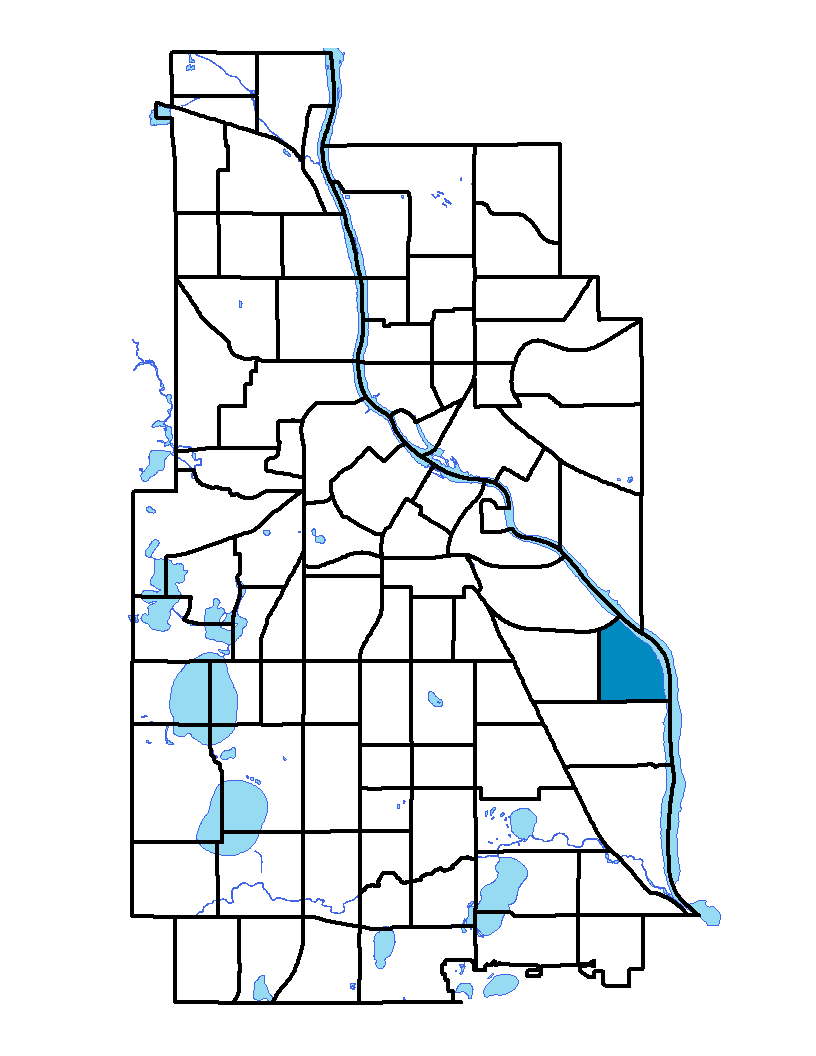The Cooper neighborhood is located in southeastern Minneapolis. It extends from 38th Avenue South in the west to the Mississippi River in the east and northeast. From north to south, Cooper extends from the 27th street railroad tracks to 34th Street East. The neighborhood's name is derived from an elementary school named after James Fenimore Cooper, an American novelist born in 1789. A mainly residential neighborhood, Cooper's most important commercial corridor is Lake Street. Parks cover the banks of the Mississippi River.
Cooper, Hiawatha, Longfellow and Howe neighborhoods share a neighborhood association; to learn more visit: http://www.longfellow.org
Indicator Details
| Indicators | Primary Domain | Indicator Value |
Rank |
Tier |
|---|---|---|---|---|
| Low Birth Weight | Health Systems and Public Safety | 14.1% | 78 | Bottom |
| Transit Accessibility | Transportation | 186.5 | 76 | Bottom |
| Blood Lead Levels in Children | Housing | 6.9% | 70 | Bottom |
| Age of Housing | Housing | 94.5% | 68 | Bottom |
| Commute Mode Share | Transportation | 18.7% | 68 | Bottom |
| Walkability | Neighborhood Characteristics | 54 | 63 | Bottom |
| Offsite Alcohol Outlets | Neighborhood Characteristics | 2 | 61 | Bottom |
| Household Transportation Costs | Transportation | 18.1% | 52 | Middle |
| Long-Term Unemployment | Employment Opportunities | 6.1% | 52 | Middle |
| Preschool Enrollment | Educational Opportunities | 43.2% | 51 | Middle |
| Proximity to Brownfield Sites | Environmental Hazards | 5.8% | 48 | Middle |
| Local Business Vitality | Economic Health | 54.1% | 48 | Middle |
| Pedestrian Connectivity | Transportation | 124 | 47 | Middle |
| Proximity to Superfund Sites | Environmental Hazards | 5.8% | 39 | Middle |
| Residential Mobility | Social Cohesion | 81.9% | 36 | Middle |
| Violent Crime | Health Systems and Public Safety | 38 | 28 | Top |
| Public Assisted Households | Employment Opportunities | 10.0% | 26 | Top |
| Access to Parks and Open Space | Natural Areas | 12.8% | 23 | Top |
| Access to Mainstream Financial Services | Economic Health | 15.6% | 23 | Top |
| Business Retention | Economic Health | 4.7% | 21 | Top |
| Adult Educational Attainment | Educational Opportunities | 97.2% | 19 | Top |
| Motor Vehicle Collisions | Health Systems and Public Safety | 2.1 | 19 | Top |
| Preventable Hospitalizations | Health Systems and Public Safety | 1.4 | 15 | Top |
| Voter Participation | Social Cohesion | 43.8% | 10 | Top |
| Tree Cover | Natural Areas | 35.2% | 9 | Top |
| Excessive Housing Cost Burden | Housing | 18.3% | 7 | Top |
| Travel Time to Work | Employment Opportunities | 19.5 minutes | 7 | Top |
| Employment Rate | Employment Opportunities | 79.0% | 6 | Top |
| Vacancy Rates | Housing | 1.7% | 1 | Top |
| Residential Proximity to Traffic | Environmental Hazards | 0.0% | 1 | Top |
| Toxic Releases from Facilities | Environmental Hazards | 0.0% | 1 | Top |
| Reading Proficiency | Educational Opportunities | -% | - | Data N/A |
| School Proximity to Traffic | Environmental Hazards | -% | - | Data N/A |
| Chronic School Absence | Health Systems and Public Safety | -% | - | Data N/A |
| High School Graduation Rate | Educational Opportunities | -% | - | Data N/A |
| School Readiness Scores | Educational Opportunities | -% | - | Data N/A |
| Food Desert | Neighborhood Characteristics | -% | - | Data N/A |

